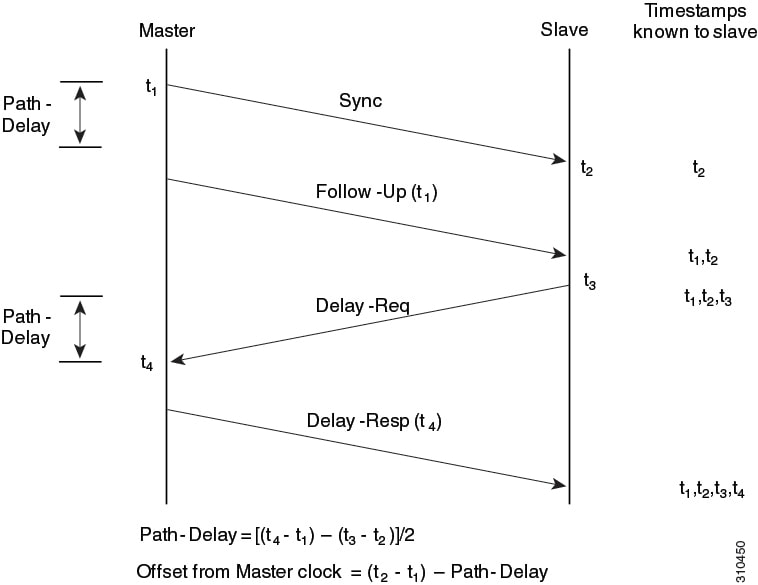To ensure clock synchronization, PTP requires an accurate measurement of the communication path delay between the time source
(server) and the receiver (client). PTP sends messages between the server and client device to determine the delay measurement.
Then, PTP measures the exact message transmit and receive times and uses these times to calculate the communication path delay.
PTP then adjusts current time information contained in network data for the calculated delay, resulting in more accurate time
information.
This delay measurement principle determines path delay between devices on the network. The local clocks are adjusted for this
delay using a series of messages sent between servers and clients. The one-way delay time is calculated by averaging the path
delay of the transmit and receive messages. This calculation assumes a symmetrical communication path; however, routed networks
do not necessarily have symmetrical communication paths, due to the various asymmetries in the network.
Using transparent clocks, PTP provides a method to measure and account for the delay in a time-interval field in network timing
packets. This makes the routers temporarily transparent to the server and client nodes on the network. An end-to-end transparent
clock forwards all messages on the network in the same way that a router does.
To read a detailed description of synchronization messages, see the PTP Event Message Sequences section. To learn more about how transparent clocks calculate network delays, refer to Transparent Clock, on page 7.




 Feedback
Feedback